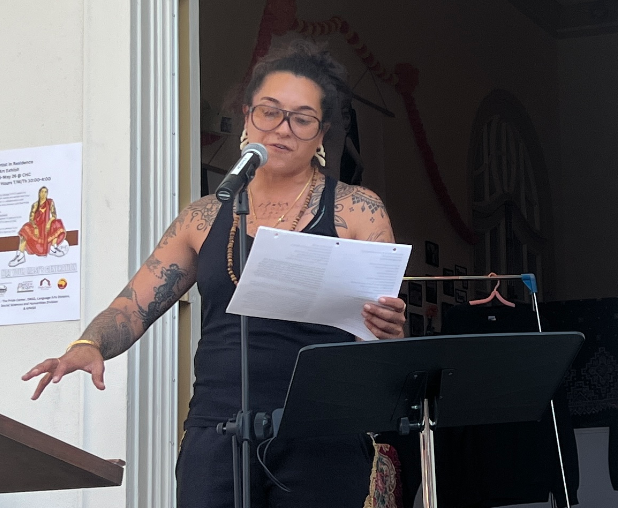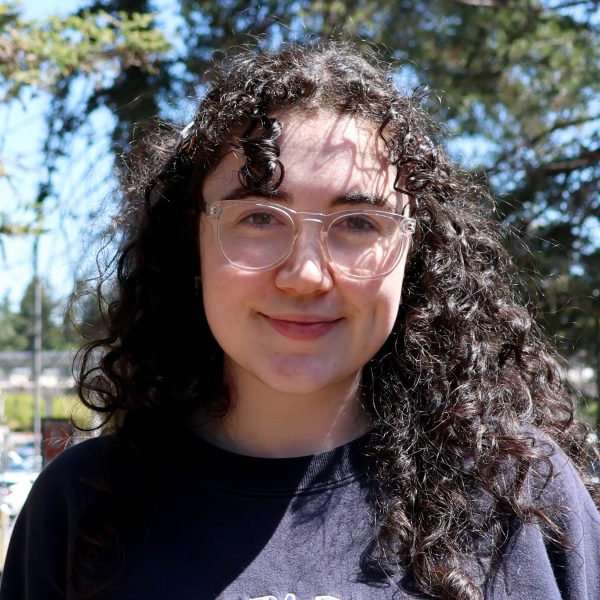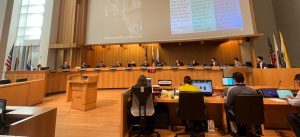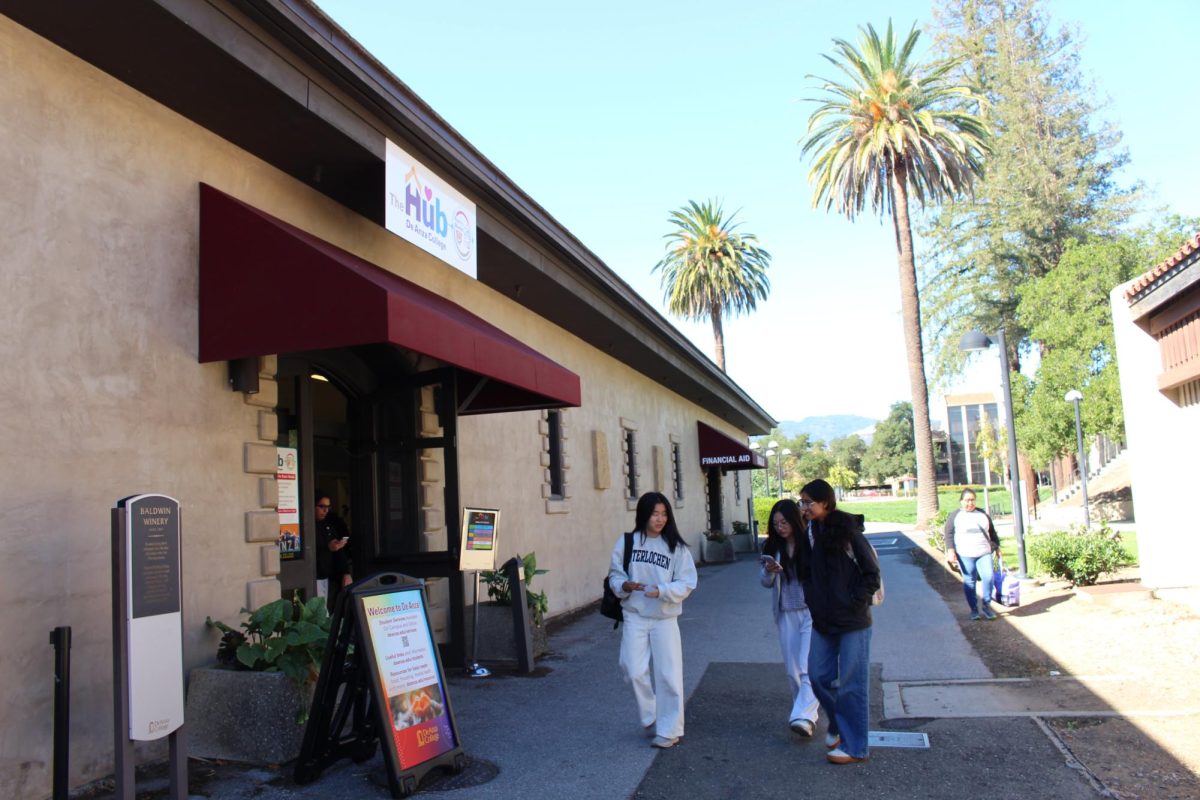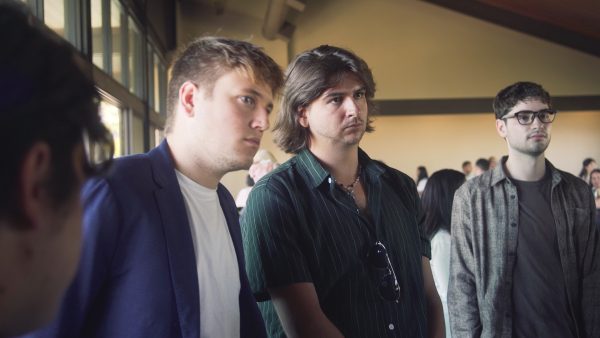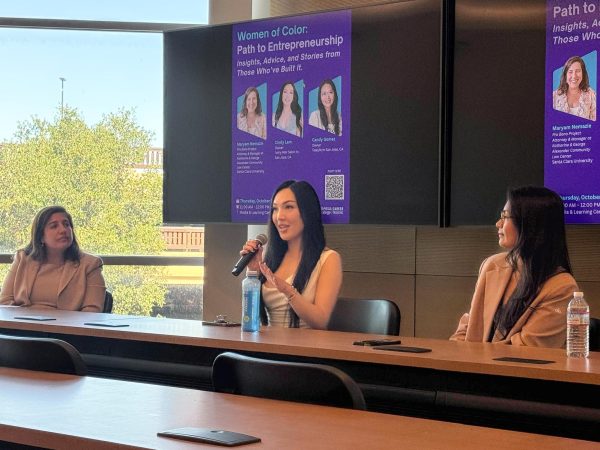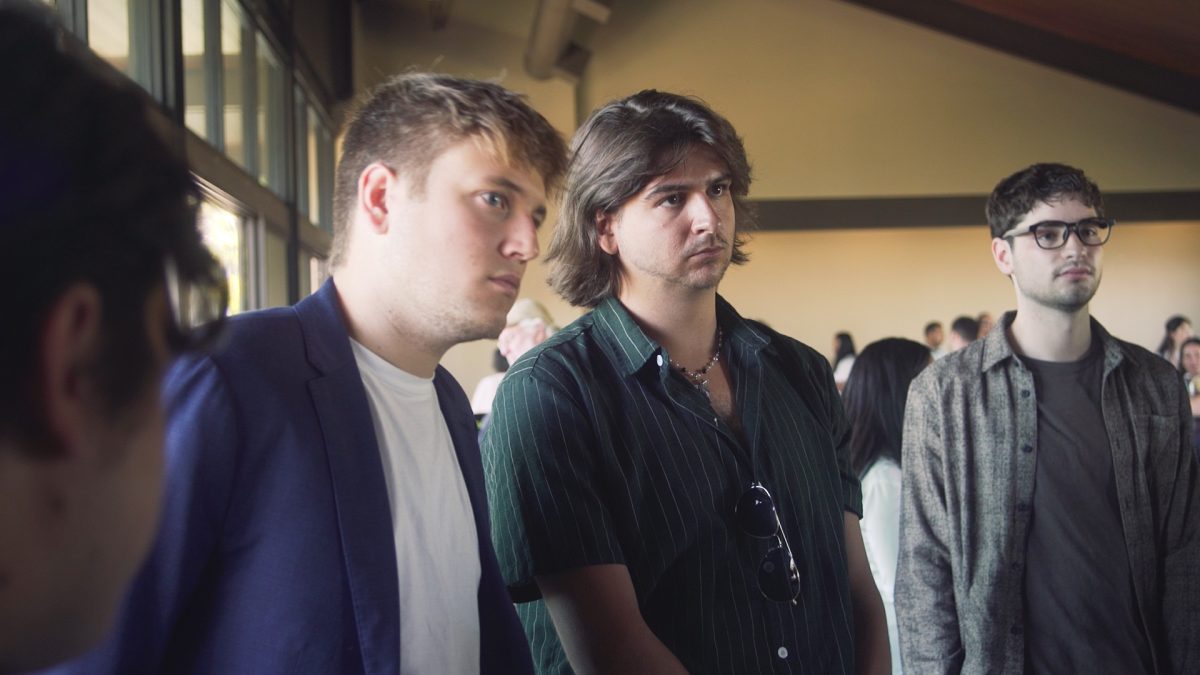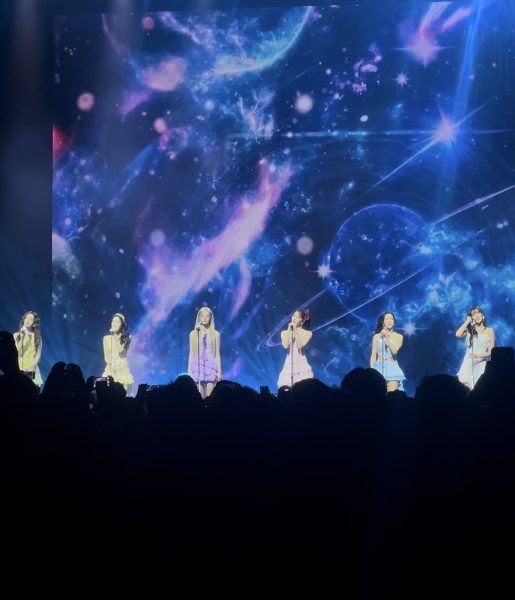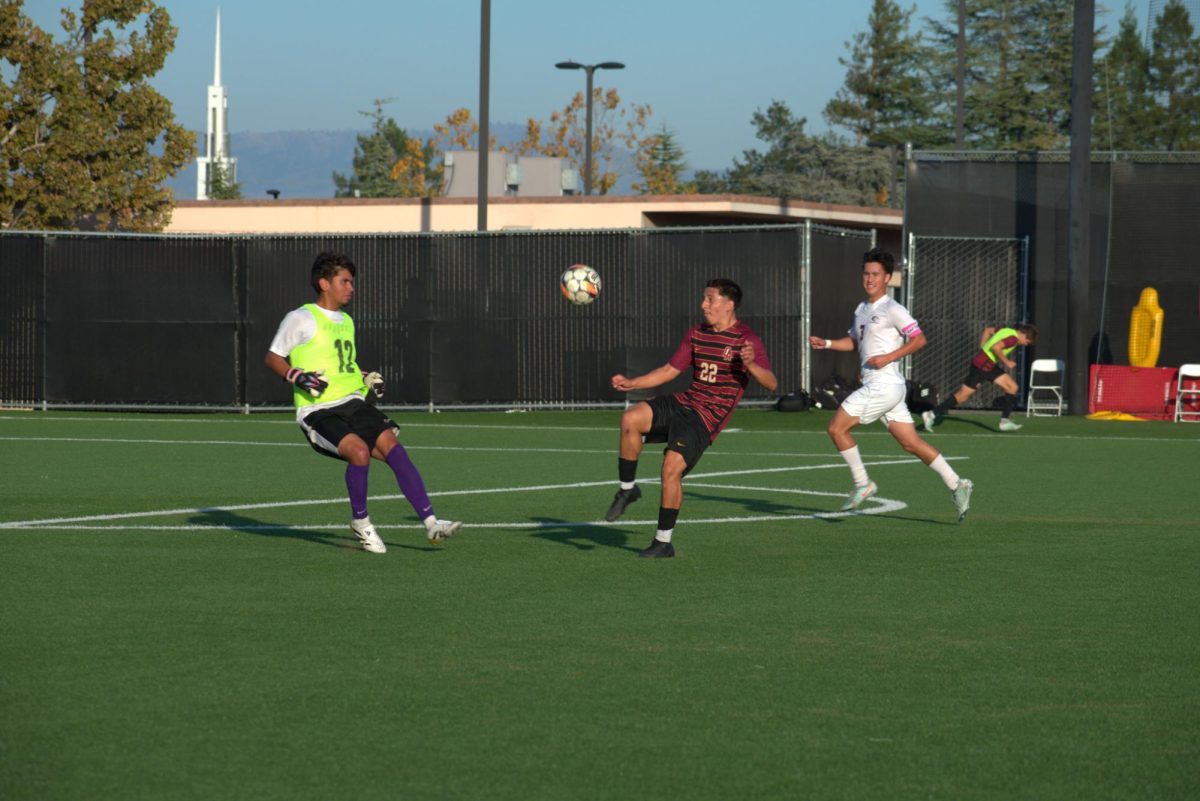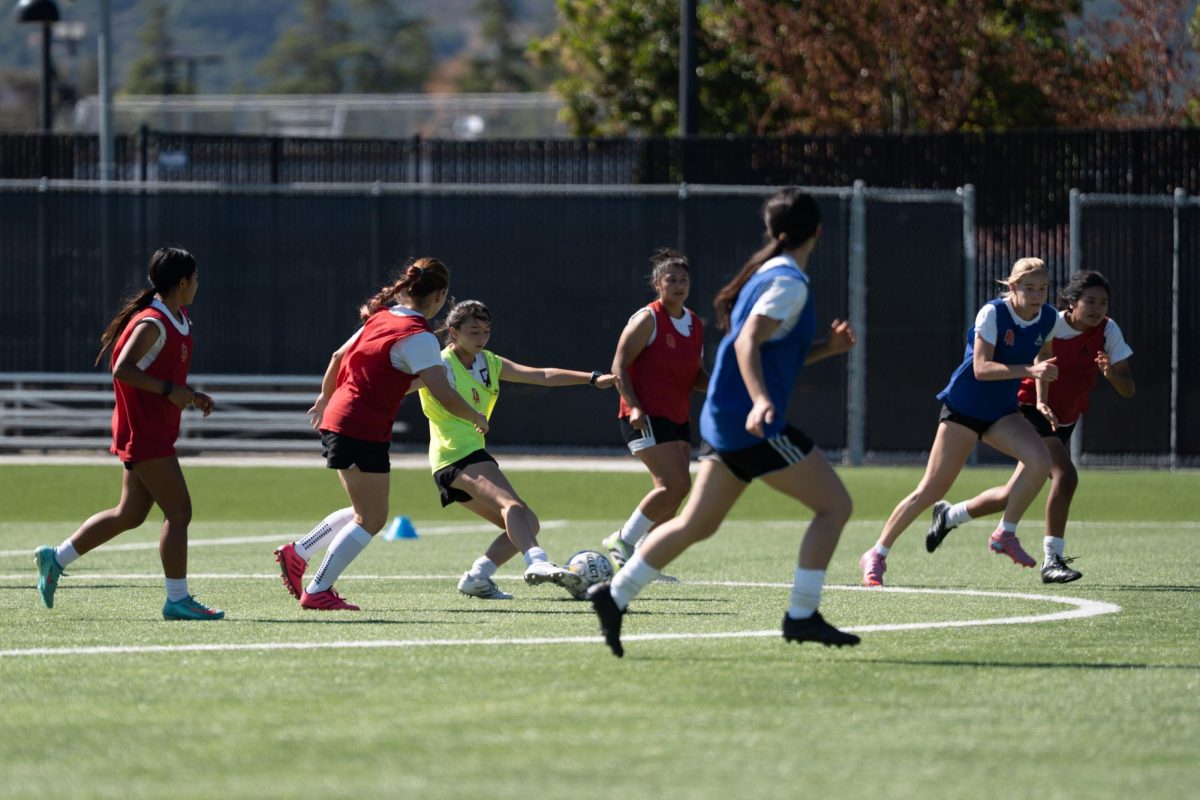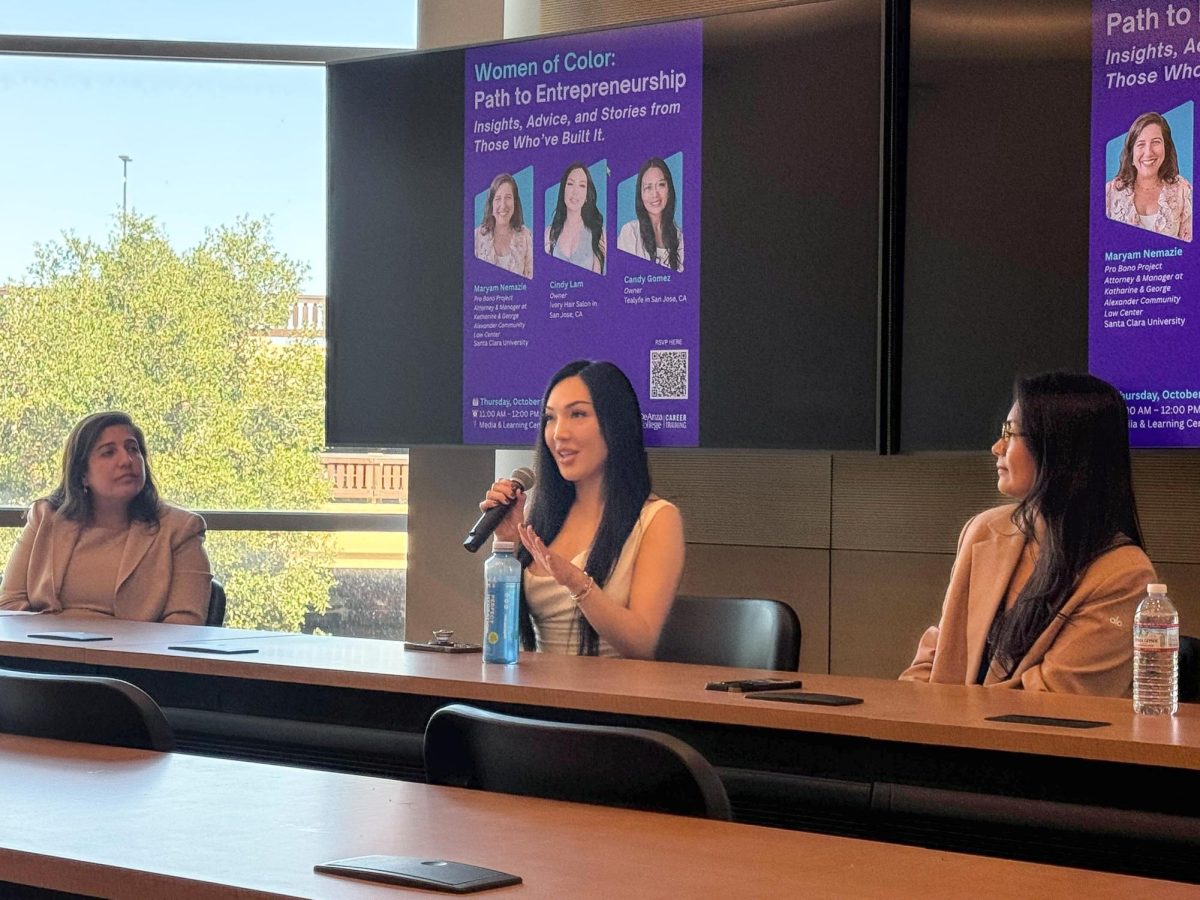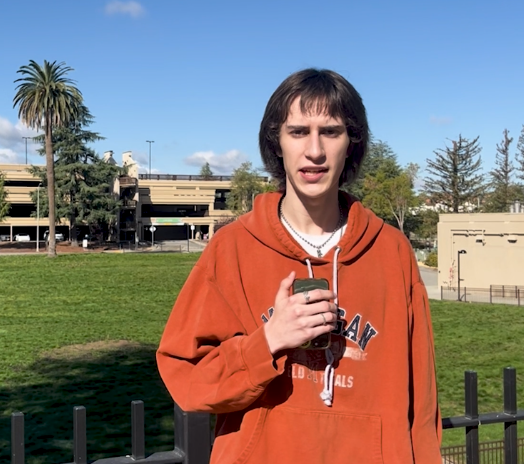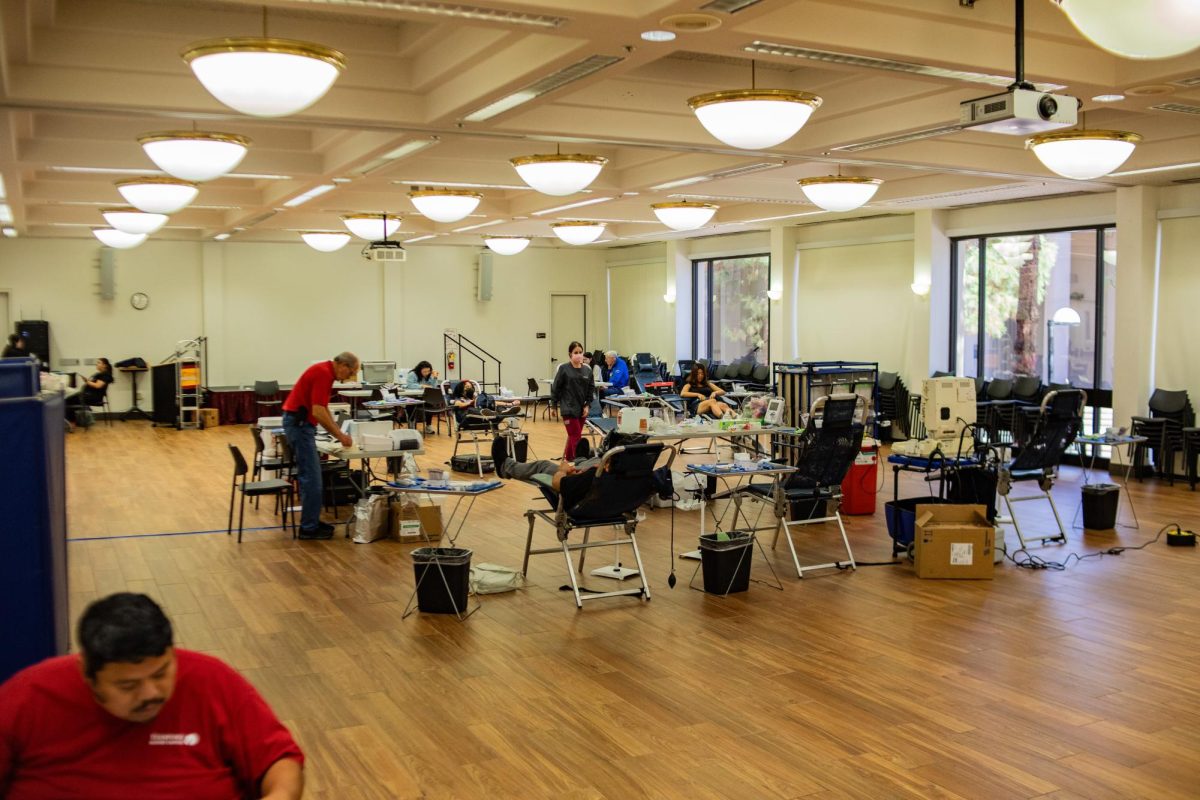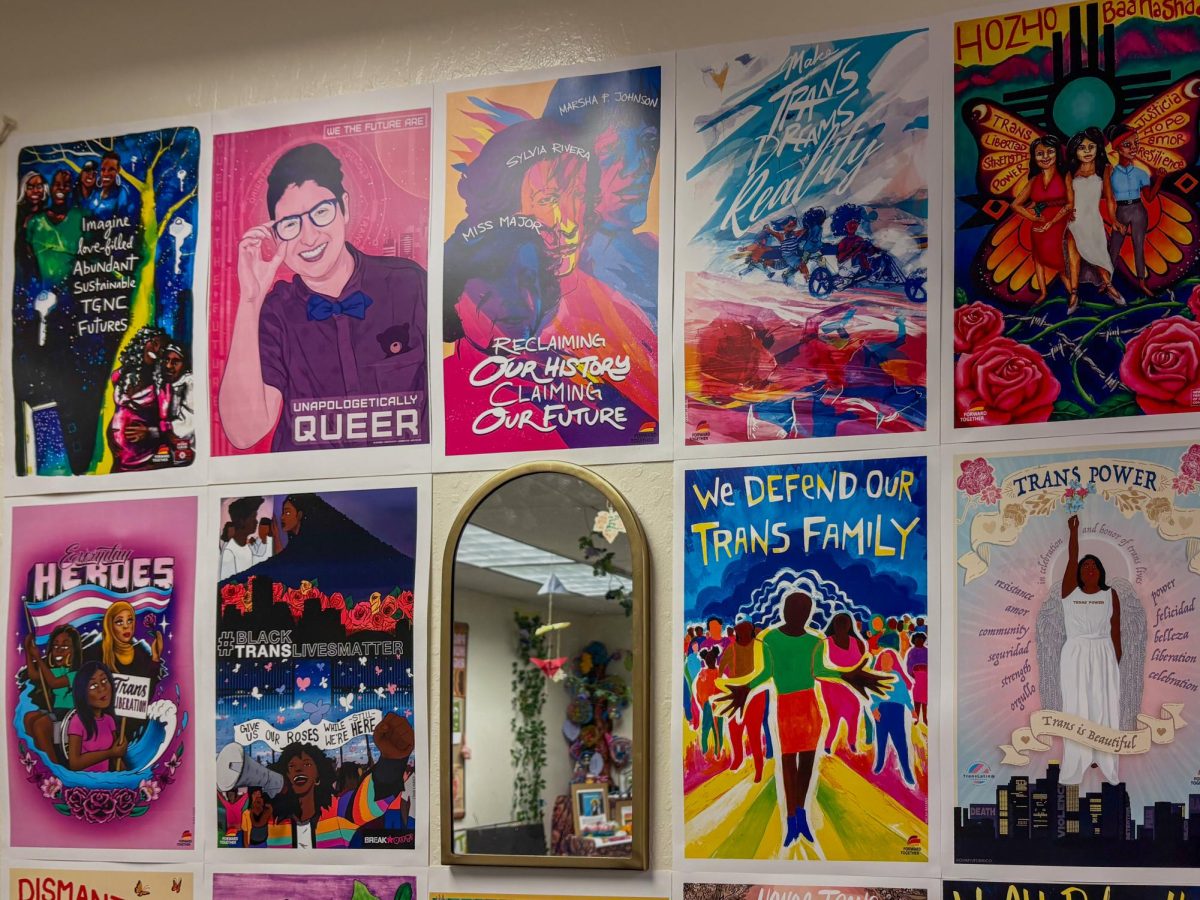‘Not Your Masi’s Generation’ art exhibit embraces artist’s East African Diaspora background and the power of strong women
Artist and educator Asha Sudra performs one of her poems about her mother and healing from generational trauma on April 27.
May 2, 2023
The California History Center at De Anza College hosted a reception for artist and educator Asha Sudra’s multimedia art exhibit ‘Not Your Masi’s Generation’ on April 27, in collaboration with the Asian Pacific American Staff Association, the Language Arts Division and the Pride Center.
During the reception, Sudra talked about her family history. She said that in India her family was considered to be part of the lowest caste in the country, which left them with very few opportunities for economic or social advancement.
They then moved to East Africa in search of a better life, but due to the rise of the Ugandan dictator Idi Amin, who was incredibly hostile towards South Asians, they had to flee to a refugee camp in England.
Sudra’s mother moved to Los Angeles for an arranged marriage. Her mother later divorced her husband and met an Ashkenazi Jewish man who became Sudra’s father. Sudra grew up in Los Angeles and she said the exhibit is her way of telling her family’s story and healing from generational trauma.

“Not your Masi’s Generation” includes a combination of family photos, paintings, mixed media pieces, poems and behind the scenes videos and audio recordings detailing the creation of the artwork. Sudra hopes those who attend will be able to make connections to their families’ own histories.
“As diverse and as specific or unique of a story this is, I think that there’s also connections for other diasporic communities or people from other (backgrounds),” Sudra said.
Sudra said she not only wants visitors to be able to see experiences they can relate to but also to identify the underlying theme.
“One (thing I hope people take away from my artwork) is the incredible power of women and our ability to pull families together, hold traditions and preserve the sacred,” Sudra said. “I come from a family of strong women and I’m proud of that, so I hope it shines through.”
Yasmin Sharbani, a 19-year-old law, public policy and society major and Pride Center intern, said she encourages people to come and visit the exhibition to better connect with the artwork.
“It’s definitely something you have to come in and see yourself,” Sharbani said. “I think you can make a lot more personal connections if you come and see it in person.”

Sharbiani helped set up the exhibit, which she said gave her a unique perspective on the process of making the artwork.
“As an observer, I got to see the creative decisions behind (parts of the exhibit) because I was there while they happened,” Sharbiani said. “It’s also very cool to see it being enjoyed by other people.”
This event is the second in a series of three events hosting Sudra at De Anza College. On March 9, she performed poetry and a reading of her book, “Not Your Masi’s Generation,” at the Pride Center and on June 6, she will come back for the Queer and Now Conference.
Pride center faculty coordinator Jamie Pelusi said a group of students from the Pride Center also read and discussed Sudra’s book, exploring messages around mental health and its intersections with queer identity.
“(We also) talked about being creative and using creativity as an avenue for dealing with mental health,” Pelusi said.
Kestia Dorand, a 21-year-old anthropology major student and the President of the LGBTQ+ Alliance, was part of this group and also attended the reception.
“(It was) even cooler than I thought it would be, which is saying something because I had very high expectations,” Dorand said.

Sudra said she was encouraged by Adriana Garcia, the administrative assistant for the Office of Equity at De Anza and a close friend in organizing and activism.
“I love coming to De Anza,” Sudra said. “(The Office of Equity has) always been open to bringing in more radical, more revolutionary, more conscious voices, and I’ve really appreciated that.”
Lori Clinchard, the faculty director at the California History Center, said students are encouraged to visit multiple times to catch all the details in the displayed artwork and scan the different QR codes.
“Anyone on or off campus is welcome to come and spend time (here),” Clinchard said. “You might even want to come back and listen. It’s unlikely you’re going to be able to listen to every single QR code story (in one visit), so you might want to come back multiple times.”
The exhibit will be open between 10 a.m. to 4 p.m. every Tuesday through Thursday until May 26. Garcia said she thinks the exhibit will allow attendees to learn more about different cultures and also see representation of themselves.
“We have a beautiful Southeast Asian population both in students and colleagues that I think will benefit (from this exhibit) in the sense of (having) pride,” Garcia said.



